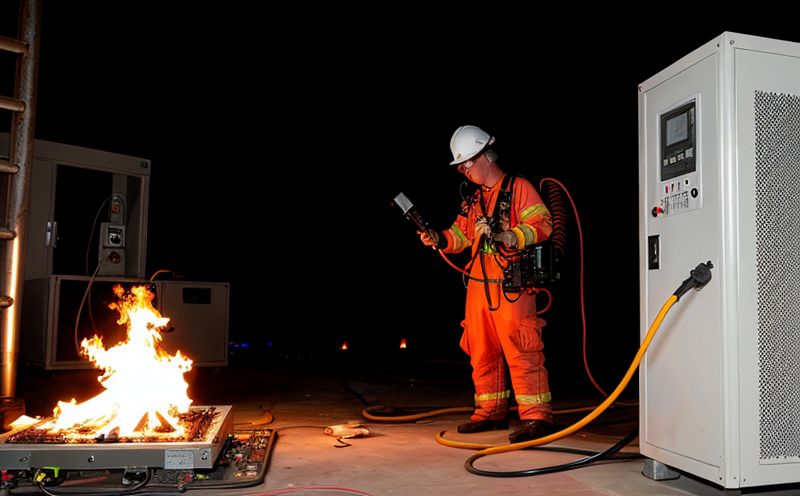Fire Performance Testing of Consumer Electronics
Fire performance testing is a critical step in ensuring that consumer electronics meet stringent safety standards and regulations. This service specifically evaluates how electronic devices behave under fire conditions, assessing their ability to prevent ignition and spread of flames. Compliance with these tests ensures the safety of end-users and helps manufacturers avoid potential recalls and legal issues.
The testing process involves subjecting a variety of consumer electronics products to controlled fire scenarios using standardized methods. The objective is to measure how effectively the product can resist catching fire, extinguish any resulting flames, or prevent further spread of fire. This not only protects consumers but also helps in reducing potential damage to property and loss of life.
Consumer electronics such as mobile phones, laptops, televisions, and other small appliances are common targets for this type of testing due to their widespread use and the risk associated with their malfunction during a fire. The tests simulate real-world conditions where devices might come into contact with open flames or be exposed to high temperatures.
For instance, mobile phones may accidentally catch fire if they overheat after prolonged usage or charging. By subjecting these products to controlled fire environments and analyzing the results, manufacturers can identify design flaws that could lead to such incidents. The testing process also helps in improving product durability and heat management capabilities.
The importance of this service extends beyond just consumer safety; it plays a crucial role in protecting the environment by minimizing risks associated with fires caused by electrical devices. Properly tested electronics can prevent fires from spreading, reducing the likelihood of larger-scale disasters such as building fires or wildfires started by faulty appliances.
Moreover, fire performance testing ensures that electronic products meet regulatory requirements set forth by various standards organizations like Underwriters Laboratories (UL) and National Fire Protection Association (NFPA). Adherence to these regulations helps manufacturers maintain their reputation for producing safe and reliable products. It also aids in gaining market access into different regions where stringent safety protocols are enforced.
To achieve accurate results, the testing process typically follows a series of steps designed to simulate realistic fire scenarios while maintaining controlled conditions. Specimens undergo rigorous evaluation using advanced thermal imaging cameras, smoke detectors, and other specialized equipment capable of detecting minute changes in temperature and flame behavior.
Why It Matters
- Ensures compliance with international safety standards (ISO, ASTM, EN)
- Promotes product reliability and longevity
- Reduces risks of fires caused by faulty electronics
- Enhances consumer trust in brand quality and safety
The significance of fire performance testing cannot be overstated. By conducting these tests, manufacturers can significantly reduce the risk of product malfunction leading to fires. This not only protects consumers but also helps prevent larger-scale disasters such as building fires or wildfires caused by electrical appliances. Furthermore, meeting regulatory requirements through rigorous testing enhances brand reputation and ensures market access into regions with strict safety protocols.
Scope and Methodology
| Test Parameter | Description |
|---|---|
| Specimen Preparation | Devices are prepared according to ISO standards, ensuring uniformity across all samples. |
| Fire Exposure Conditions | Products are exposed to various fire intensities and durations as per NFPA guidelines. |
| Flame Spread Measurement | The rate at which flames spread along the surface of the device is measured using specialized instruments. |
| Heat Release Rate Analysis | This metric assesses how much heat is released by the specimen during combustion, influencing fire behavior and severity. |
Environmental and Sustainability Contributions
- Promotes safer use of electronic products in homes and public spaces
- Aids manufacturers in reducing the frequency of recalls due to fire hazards
- Encourages innovation towards more resilient materials used in device manufacturing
The environmental benefits of fire performance testing extend beyond immediate safety measures. By promoting safer use of electronic products, this service encourages responsible purchasing decisions among consumers. This, in turn, supports the overall goal of reducing waste and fostering sustainable consumption patterns.





